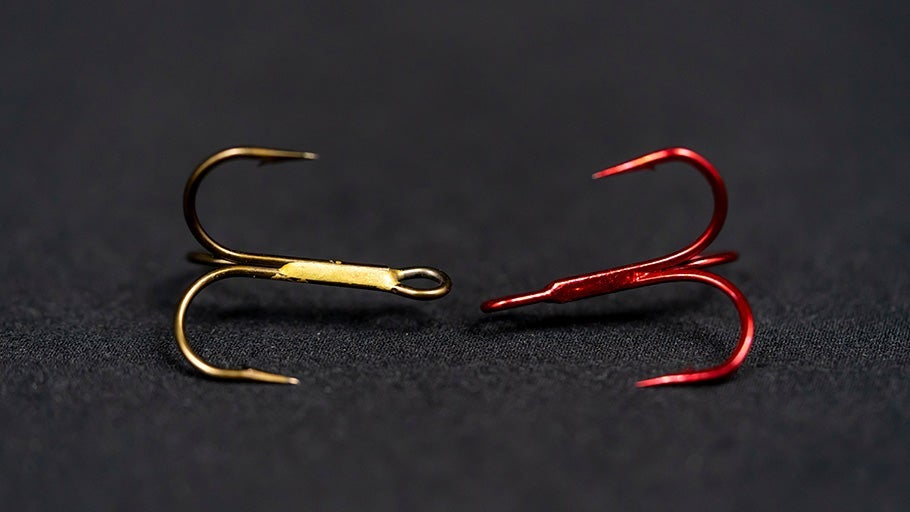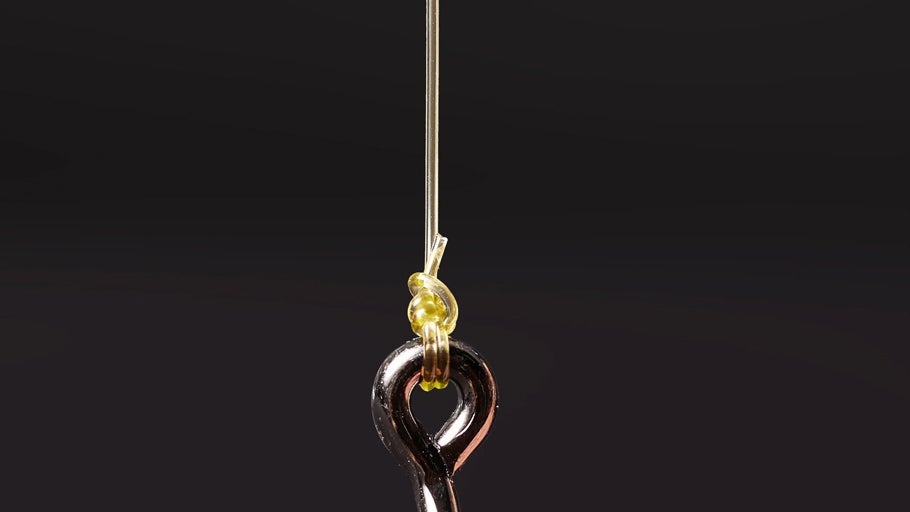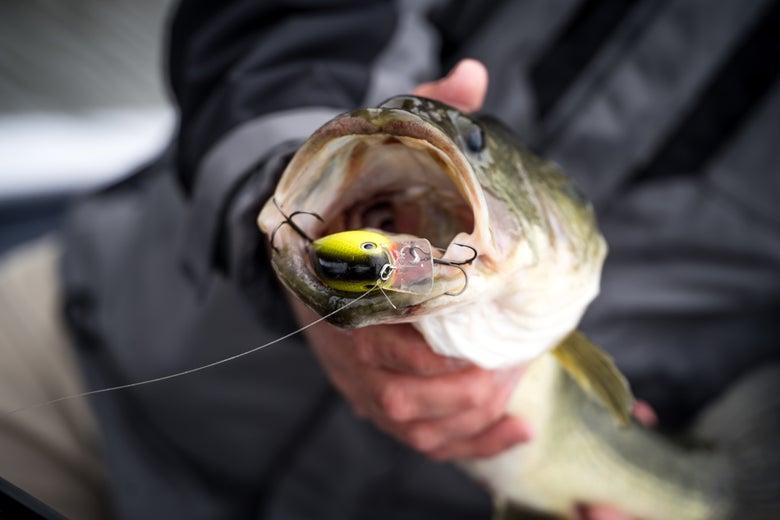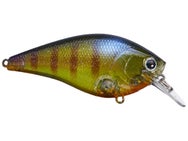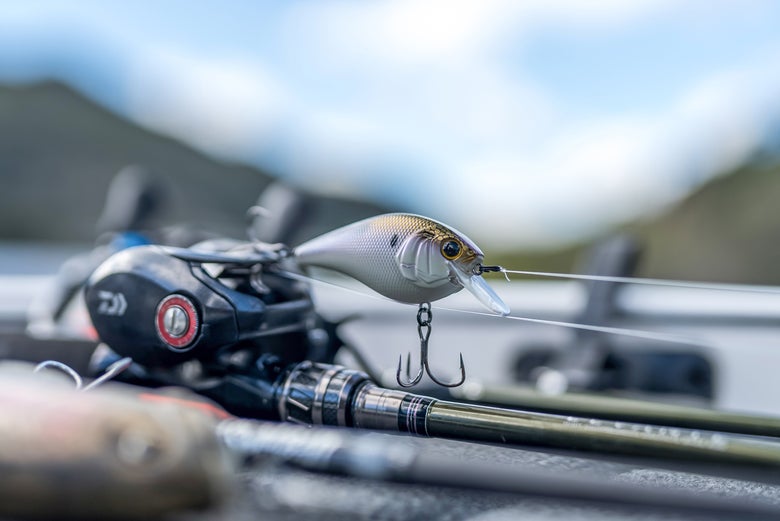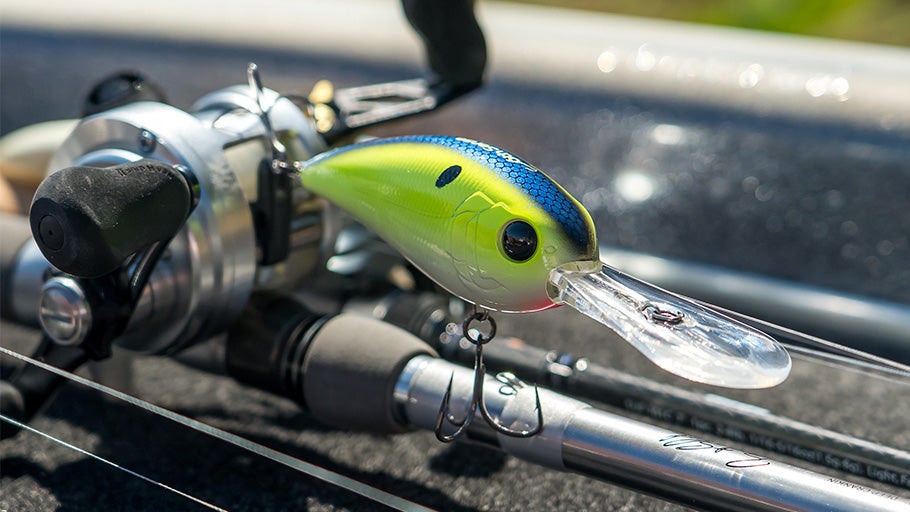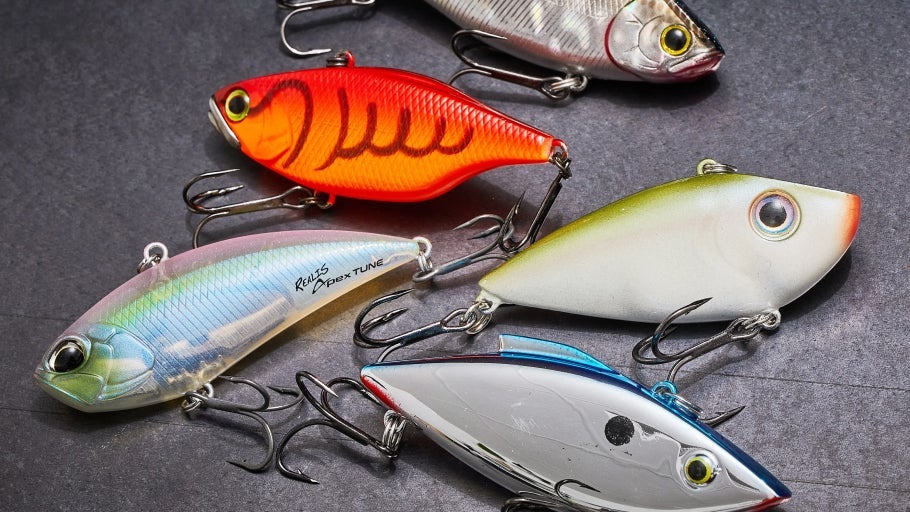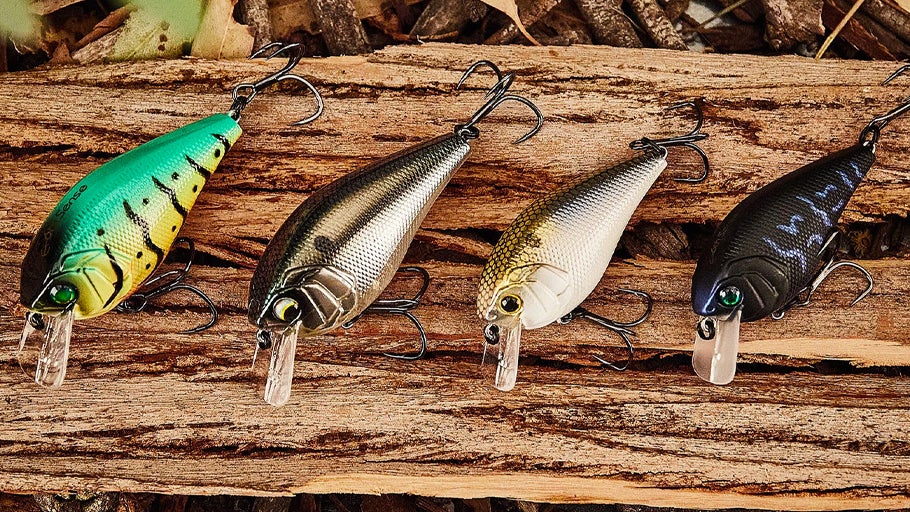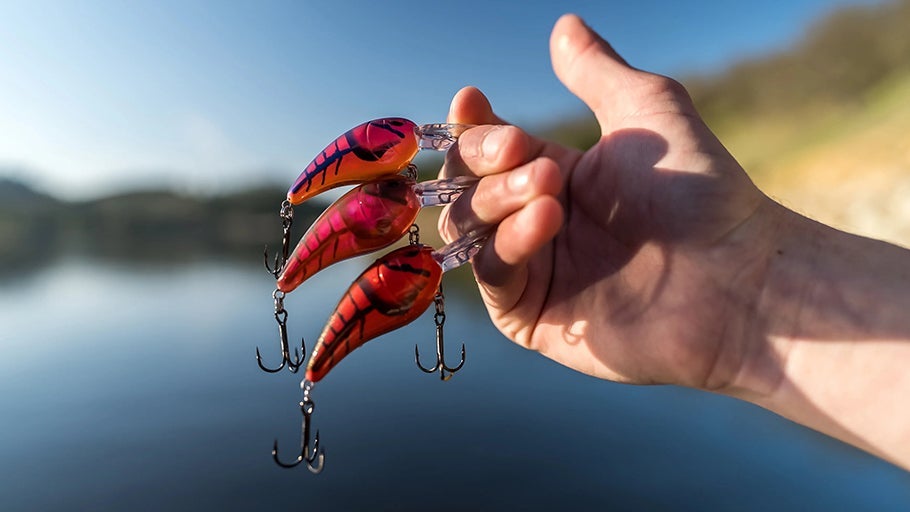
Squarebill Crankbait Gear Guide
Known for being a shallow water producer throughout the year, the full-bodied and wide-wobbling action of a squarebill crankbait truly shines as the fish move up and begin feeding during the pre-spawn. When faced with nasty cover it's hard to beat the quick-floating, hard-hunting, and deflective action of a squarebill to trigger reaction bites and pull fish out of their hiding places. All shallow water areas present opportunities to catch fish with a squarebill, but targeting defined structure like grass edges, stumps, rocks, riprap, wood, stick-ups, and running it over the tops of brush and vegetation will often yield the best results. In this gear guide we’ll provide some tips and tricks for squarebill cranking, show you how to easily swap out treble hooks, and go over all the best equipment you’ll need to get you started with this exciting shallow-water power fishing technique!
Squarebill Crankbait Rods
Squarebill fishing is often target-oriented, so a shorter, powerful crankbait rod in the 7’ - 7’2” range, with a medium heavy to heavy power rating, and moderate fast taper is typically favored. Paired with a shorter handle grip, this combination of length and action provides the versatility to make long casts while maintaining convenient handling for shorter and more accurate casts in tight quarters. The forgiving bend of a moderate taper absorbs headshakes to keep the hooks pinned, and the heavier power rating gives you a little extra strength to direct big fish away from snags and cover. Composite or glass rods are often great for crankbaits due to their slow and moderate bend, but if you’re cranking grass or dense cover, you may prefer the added backbone of a graphite cranking rod for a little extra power to snap the hooks free.
Squarebill Crankbait Reels
A casting reel with a 7:1 gear ratio is a great all-around choice for squarebills, as the mid-range speed keeps the bill moving side-to-side quickly to improve deflections, allowing you to cover water efficiently without overworking the bait. Large diameter lines are commonly associated with squarebill fishing, so most anglers opt for a low-profile casting reel in the 150-200 size range to provide enough capacity to accommodate thick fishing lines. Adding a power handle is a nice upgrade for your cranking reel as it provides more torque for crashing through cover, increases power for winching fish back to the boat, and makes long fishing sessions more comfortable.
Squarebill Crankbait Line
The key to effectively fishing squarebill crankbaits is to maintain bottom contact throughout the retrieve and aggressively deflect them off shallow cover to trigger aggressive reaction bites. Heavy fluorocarbon line in the 15lb-20lb range offers increased abrasion-resistance needed to navigate heavy cover without damaging your line. On occasion, you may want to scale down to 12lb with a smaller lure or when trying to fish slighty deeper, but most of the time a heavier line is preferred when fishing shallow, snag-ridden areas. When you encounter grass or soft cover, you may consider adapting by switching to a no-stretch braided line to help snap the squarebill free from vegetation.
Modifications & Rigging
Considering how frequently your line, hooks, and squarebill contact hard cover, it’s critical to keep a close eye on the sharpness of your treble hooks and swap out or sharpen them as necessary. When you’re on a good cranking bite, it’s not uncommon to swap out hooks on a daily basis if you are spending most of your day fishing around rocks, riprap, wood, dock pilings, stumps, and heavy cover.
Tips & Tricks
When you start to feel the resistance of hard cover, resist the urge to pull or yank the crankbait with your rod tip. Instead, slow down your retrieve, keep reeling, and most of the time the plug will find its way through. If you feel the crankbait completely lock up, give it a moment of slack, and often the lure will back itself out. Try experimenting with balsa squarebills - balsa wood is an extremely buoyant material that tends to float upwards faster than traditional plastic to recover quickly in extremely heavy cover where other lures would constantly snag.
Colors
While it’s always a good idea to consider what type of forage inhabits in the waters you’re fishing, there’s no need to overthink your color selection with squarebill crankbaits. Try to keep it simple with your favorite crawfish, bluegill, or shad patterns, while also mixing in some chartreuse variations so you have some contrasting color options for different types of water clarity. Shad patterns provide a great starting point no matter what time of year or body of water, but don’t overlook the bluegill or crawdad patterns during the Spring months if the fish are short-striking or not fully committed.
Related Articles

